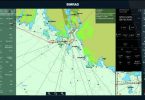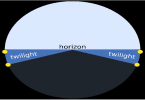- The ‘reporting’ aspect where vessels to which LRIT applies report their identity and position, with a date/time stamp, every six hours (four times per day).
- The ‘receiving’ aspect where coastal States can purchase reports when vessels are within 1,000 nautical miles, or where port States can purchase reports when vessels seek entry to a port at a pre-determined distance or time from that port (up to 96 hours pre-entry).
The LRIT system consists of the shipborne LRIT information transmitting equipment, the Communication Service Provider(s), the Application Service Provider(s), the LRIT Data Centre(s), including any related Vessel Monitoring System(s), the LRIT Data Distribution Plan and the International LRIT Data Exchange. Certain aspects of the performance of the LRIT system are reviewed or audited by the LRIT Coordinator acting on behalf of all SOLAS Contracting Governments.
As per SOLAS Chapter V, Regulation 19-1, on Long Range Identification and Tracking (LRIT) refers to the requirement for specified Convention vessels to automatically transmit their identity, position and date/time of the position at 6-hourly intervals, with an ability to increase the rate to intervals of up to once every 15 minutes when requested. In addition, the equipment must be able to respond to poll requests.
LRIT users include the following:





